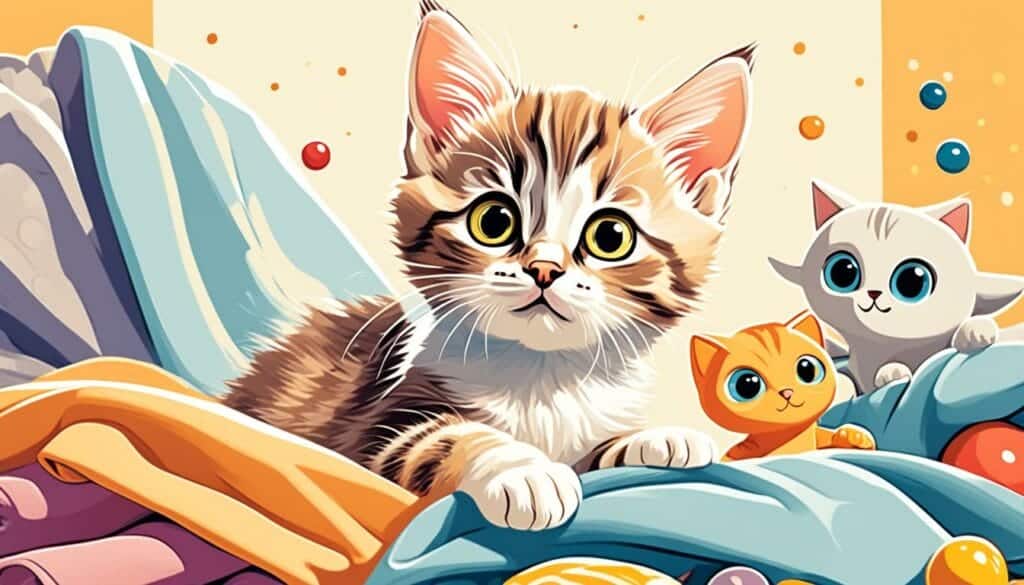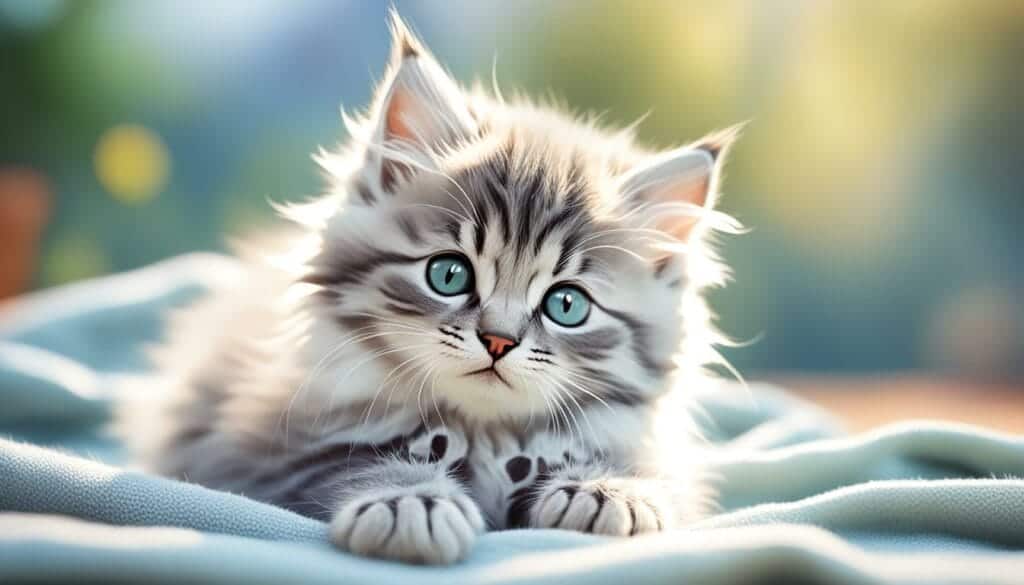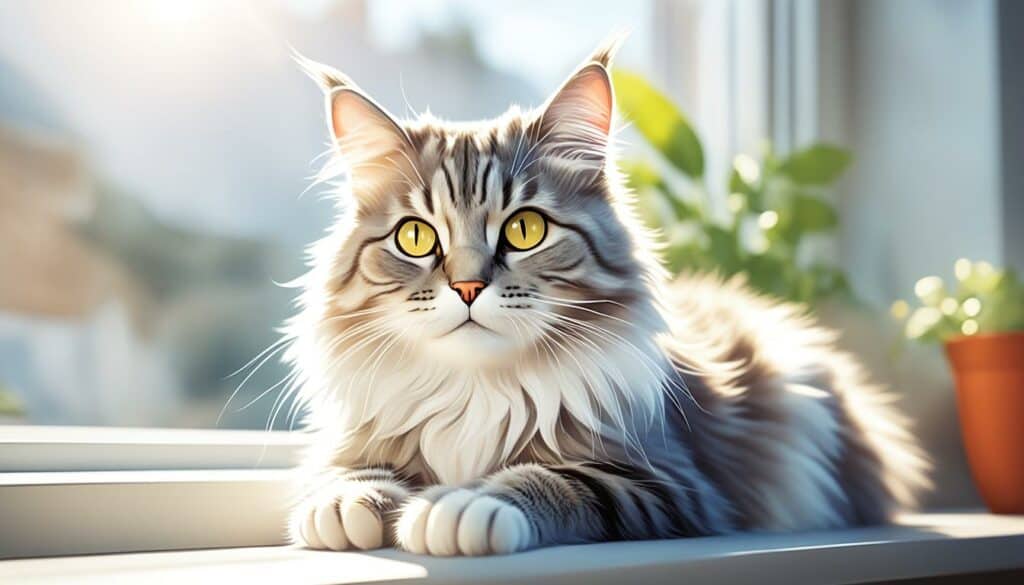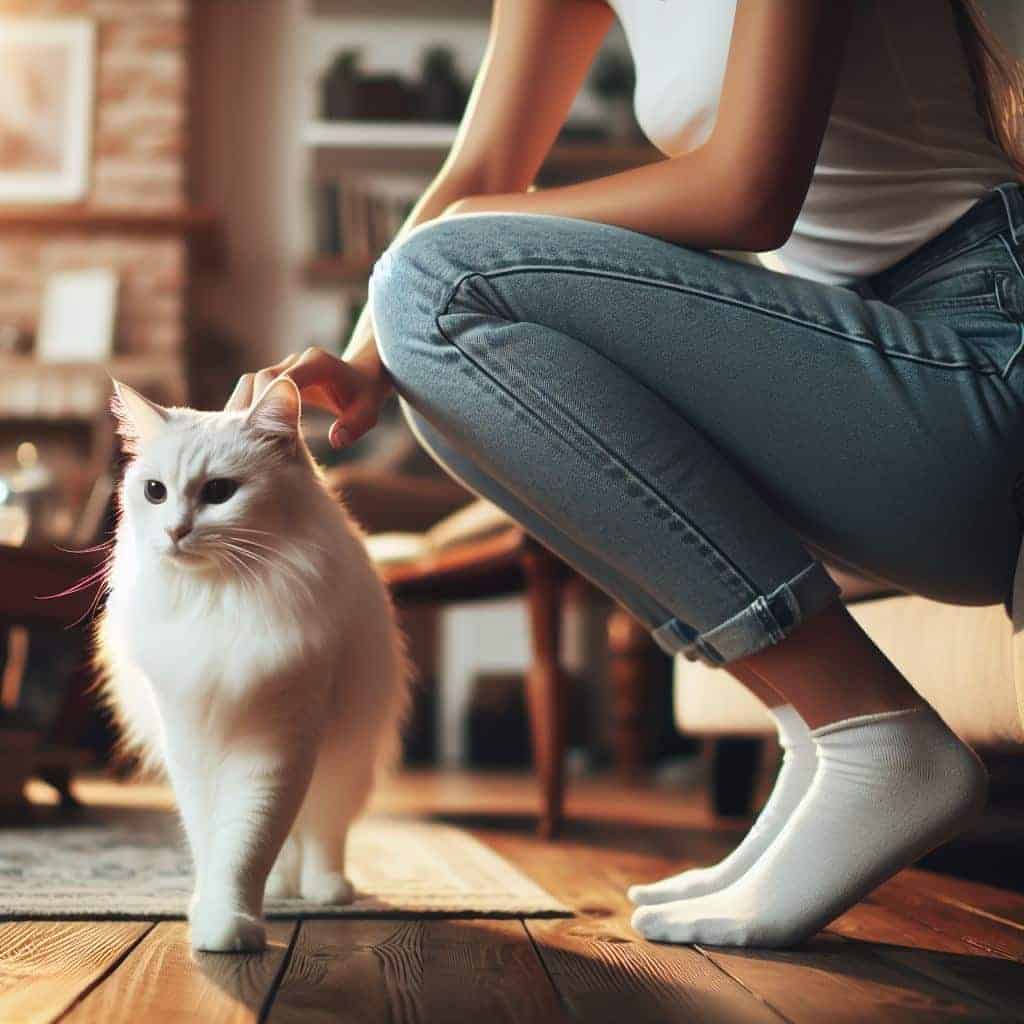
Cats are known for their enigmatic and quirky behaviors, many of which endear them to us and deepen the bonds we share. Among these behaviors, kneading — that rhythmic pressing of paws against soft surfaces — is one of the most recognizable. Often referred to as “making biscuits,” this action is not just adorable but rooted in a cat’s instinctual behavior extending back to kittenhood. In my years specializing in feline behavioral studies, I’ve seen firsthand the comfort and nostalgia kneading can bring to a cat, reminiscent of the contentment of nursing.
However, it’s fascinating to observe that not all cats partake in this common behavior. The reasons why some cats choose not to knead can offer deeper insights into their psychological state and physical health. Grasping the nuances of such behaviors is pivotal in understanding our feline friends better.
Let’s explore the mysterious world of cat behavior to understand why some cats skip the kneading ritual.
The Science Behind Kneading
Cat kneading behavior is a fascinating and unique aspect of feline behavior. It involves a rhythmic pushing motion with their paws, typically alternating from left to right. While the exact purpose of kneading is not fully understood, there are several reasons why cats engage in this behavior.
Kneading is more than just an adorable quirk; it has both physical and psychological implications. Let’s explore what kneading involves and why it’s beneficial for cats.
What is Kneading?
Kneading is a motion cats make by pushing their paws in and out against a soft surface, such as a blanket or a human lap. Initially, kittens knead their mother’s belly to stimulate milk flow. This comforting action often carries into adult life, signifying contentment and security.
| Kneading Behavior | Description |
|---|---|
| Purpose in Kittens | Stimulates milk flow from the mother |
| Continuation in Adulthood | Indicates comfort and contentment |
Psychological and Physical Benefits of Kneading
Kneading not only links to comfort but also entails other benefits like marking territory and stretching muscles.
- Comfort and Security: Kneading replicates the feelings of safety and satisfaction associated with nursing in kittenhood. It’s a gesture indicating that the cat feels safe and loved.
- Territorial Marking: Cats have scent glands in their paws, letting them mark their territory wherever they knead. This marks their relaxed and secure territory, whether it’s a spot on the couch or a corner of your bed.
- Muscle Stretching and Maintenance: The motion of kneading helps stretch and strengthen the muscles in the paws, forelegs, and even the back. It supports muscle tone and circulation.
By understanding the integral role kneading can play in a cat’s life, we gain insight into why a lack of this behavior might appear concerning. Next, we’ll explore the reasons some cats may not participate in kneading — illuminating factors from personality traits to health issues that could influence this behavior.
Exploring the Reasons Some Cats Do Not Knead

Not every cat follows the textbook patterns of behavior, and their inclination towards kneading can be influenced by a variety of factors, from their inherent personality to past experiences or even health concerns. Here are the key factors that might influence this behavior:
Personality and Temperament
Just as humans have different habits and preferences, so do cats. Their unique personality drastically influences their behaviors, including whether or not they choose to knead.
| Factor | Impact on Kneading Behavior |
|---|---|
| Activity Level | More active cats may be less likely to knead, preferring more dynamic activities. |
| Temperament | Shy or more independent cats might not feel the need to “make biscuits” as a way of expressing comfort or marking territory. |
Past Trauma and Environmental Factors
A cat’s past experiences, especially during the formative kitten phase, can greatly determine their comfort with behaviors such as kneading.
| Experience | Potential Impact on Kneading |
|---|---|
| Early Weaning or Orphaned | Early separation from the mother may mean the cat never learned to knead as a natural part of nursing. |
| Previous Living Conditions | Cats that have lived in high-stress environments, like shelters or abusive homes, may associate the vulnerability displayed during kneading with negative experiences. |
Health Issues That May Inhibit Kneading
Certain health complications can make kneading uncomfortable or painful, leading some cats to abstain from the behavior entirely.
| Health Issue | Description |
|---|---|
| Arthritis | Joint pain, particularly in the paws and forelegs, can make the pressure and movement of kneading painful. |
| Neurological Conditions | Disorders affecting the nervous system may impair the physical ability to perform the coordinated act of kneading. |
Understanding these factors helps us as cat owners and caretakers to better interpret our pets’ behaviors and adapt our care to suit their individual needs. Recognizing the absence of kneading as a potential sign of discomfort or distress allows us to respond more appropriately to our cats’ well-being. In the next sections, we will discuss what lack of kneading could indicate about a cat’s welfare and when it might be a cause for concern, guiding owners on how to best support their furry family members.
Behavioral Studies and Observations
Understanding the nuances behind a cat’s behaviors, such as not engaging in kneading, is essential for discerning more about their overall wellness and emotional states. Below are some observational studies and professional experiences, which provide a clinical lens through which we can better understand these behaviors.
Case Studies
Drawing from documented observations within a clinical setting, case studies provide invaluable insights into cat behavior. These accounts help bridge the gap between general behavioral knowledge and the individual quirks of specific cats.
Below is a table compiling the five case studies on why some cats do not knead, along with the external resources cited for each case study.
Case Study |
Description |
External Resources |
|---|---|---|
| Early Separation from Mother | Luna, a domestic short-haired cat, was separated from her mother at 6 weeks. She did not develop the kneading behavior likely due to the early separation disrupting her opportunity to learn this behavior. | Cats.com |
| Physical Discomfort | Max, a 5-year-old Siamese cat, stopped kneading due to arthritis in his front paws, which made the kneading motion painful. | PedMD |
| Lack of Socialization | Bella, a 3-year-old mixed breed cat, was found as a stray with minimal human interaction during her early months. She did not knead, likely due to lack of early socialization. | Better with Cats |
| Breed-Specific Tendencies | Oliver, a 2-year-old Siamese cat, rarely kneaded compared to other cats in the household, suggesting that genetic factors and breed-specific tendencies can influence kneading behavior. | WedMD |
| Behavioral Changes Due to Stress | Daisy, a 4-year-old domestic long-haired cat, stopped kneading after the family moved to a new house, likely due to stress from the environmental change. | Scientifi Camerican |
Comparative Analysis with Kneading Cats
By comparing cats who knead with those who don’t, we can start to piece together whether certain environmental, psychological, or health factors predominate.
| Behavior | Kneading Cats | Non-Kneading Cats |
|---|---|---|
| Comfort Levels | Often knead on soft surfaces indicating comfort and security. | May find other behaviors to express comfort, such as curling tightly in secluded spots. |
| Health Status | Generally healthy, with no pain in paws or joints. | May suffer from conditions like arthritis or have had traumas affecting their paws. |
Studying these differences not only helps in understanding what normal and abnormal behaviors look like but also aids in identifying signs that might require further medical investigation or behavioral interventions.
What Not Kneading Could Indicate About a Cat’s Welfare

While many cats might simply prefer not to knead, there are circumstances where this absence could be indicative of more serious concerns. As a veterinarian specializing in cat behavior, it’s important to educate cat owners on distinguishing these nuances.
When Lack of Kneading Is a Concern
Not all cats will knead, and this can be perfectly normal for some. However, there are signs that, when coupled with not kneading, might require attention.
| Sign | Possible Issue | Recommended Action |
|---|---|---|
| Lethargy | Could be a sign of illness or discomfort. | Consult a veterinarian for a thorough exam. |
| Changes in Other Behaviors | Sudden changes can indicate stress or health issues. | Observe if the behavior persists and seek veterinary advice if it continues. |
Normal vs. Abnormal Non-Kneading
Understanding what is normal for your cat is key. A cat who has never kneaded from a young age without any other signs of distress is likely just exhibiting a personal trait. However, a cat that suddenly stops kneading or shows other changes in behavior might be experiencing issues that need addressing.
| Behavior Type | Description | Consideration |
|---|---|---|
| Normal Non-Kneading | Consistent over the cat’s lifetime without distress signs. | Typically not a concern unless accompanied by other symptoms. |
| Abnormal Non-Kneading | Sudden cessation, especially if coupled with discomfort or changes in routine. | Advisable to seek veterinary consultation to rule out health issues. |
By illuminating these distinctions, cat owners can be better equipped to monitor and respond to their cat’s health and happiness effectively. Recognizing when to worry, and when not to, is a vital part of caring for a pet. This knowledge empowers owners to provide the best possible environment for their cats, ensuring they live a full and comfortable life.
FAQs
Question |
Answer |
|---|---|
| Are there ways to encourage a cat to knead if they do not do so naturally? | Yes, you can encourage a cat to knead by providing soft, comfortable surfaces like blankets or plush toys. Gently petting the cat and offering a calm, stress-free environment can also help. Experimenting with different textures and locations may also encourage kneading behavior. |
| What factors may influence a cat’s decision not to knead? | Several factors can influence a cat’s decision not to knead, including individual personality, past experiences, and comfort level. If a cat feels stressed or uncomfortable, it may avoid kneading. Additionally, some cats simply may not have developed this habit. |
| Do age-related changes play a role in a cat’s kneading habits? | Yes, age-related changes can play a role in a cat’s kneading habits. Older cats may knead less frequently due to decreased energy levels, arthritis, or other age-related physical changes that make the activity uncomfortable. |
| Are there environmental factors that could discourage or prevent kneading in cats? | Environmental factors such as a lack of soft surfaces, high-stress levels, or a disruptive household can discourage a cat from kneading. Ensuring a calm and stable environment with plenty of cozy spots can promote kneading behavior. |
| Can medical issues or physical discomfort interfere with a cat’s ability to knead? | Yes, medical issues or physical discomfort can interfere with a cat’s ability to knead. Conditions like arthritis, injuries, or other physical ailments can make kneading painful or difficult. If a cat suddenly stops kneading, it’s advisable to consult a veterinarian. |
Final Thoughts
In closing, whether your cat kneads or not, each behavior or absence thereof offers a unique insight into their world. By understanding and respecting these behaviors, we help ensure that our feline friends lead full and comfortable lives, enveloped in the care and love they deserve. Always remember, the complexities of cat behaviors are vast and nuanced, and each cat’s habits are a window into their health and happiness.
Call to Action
I invite all cat owners and enthusiasts to share their experiences and stories in the comments. Have you noticed any unusual behaviors in your cats? What steps have you taken to understand and address them?
Join the conversation and let’s learn from each other about the fascinating world of our feline friends.
Sure, I can help with that. Here’s a table with the questions and answers:

In her previous life, Lisa traveled extensively, both for work and leisure. After the pandemic struck, Lisa locked up her luggage and adopted a cat ever since.
Lisa is now an avid cat lover, she devotes most of her free time serving as butler to her adorable feline at home. When she is not with her cat, she can be seen using her phone sourcing for the latest cat supplies online.


